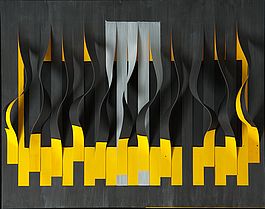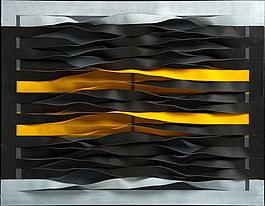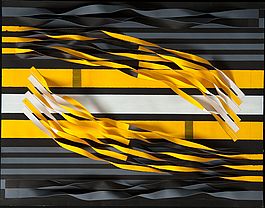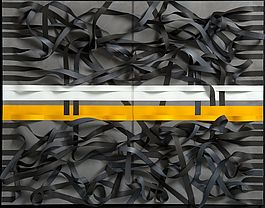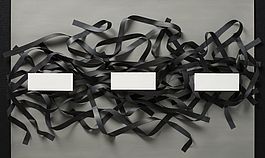Acrylic paint on paper
36” x 28” x varying height
Contact the artist for pricing
As with the “Grasslands Drawings,” the series “Road Striping Drawings #1, #2, #3 and #4” was inspired by photographs taken on my long road-trips in 2010 and 2011 through the grasslands of mid America. Since I mostly followed secondary, two-lane blacktop roads I didn’t see much traffic. When the road ahead and the landscape on all sides are virtually empty, one can drive at any speed and safely stop at any moment almost anywhere. As a result, I became aware of and very interested in the changing graphics of the road surface, itself.
These back roads came in many colors depending on where I was geographically and the types of asphalt mixes and stone found locally. The yellow and white paint striping added to the color palette of the surface. However, what most interested me was the beautiful patterns that emerged from the repair practice of applying tar to the cracks in the road surface. Whoever applied the tar must have done so in the spirit of great Chinese or Asian calligraphers. One could imagine that in these flourishes a message was left for future archaeologists. All of these patterns were further enriched by the marks of rubber tires burned into the surface, or the tracks left from tires crossing lines when freshly painted yellow and white lines were still wet.
Like the “Grasslands Drawings” and the “Paper Studies” shown elsewhere on my site, the Road Stripe drawings are three-dimensional; the lines in the drawings are both painted and cut strips of paper twisted and pushed into different shapes. As a three-dimensional piece, I felt that a Road Stripe drawing could be shown horizontally on a pedestal rather than hung vertically—and conventionally—on a wall. Looking down on a drawing seemed to me to be a valid perspective, and the drawings do represent horizontal road surfaces.
